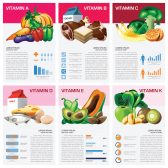Definition
noun, plural: corals
(marine biology) An invertebrate species characterized by having a clear polyp body with a central mouth surrounded by a ring of stinging tentacles, and often lives in colonies with other corals (as in coral reefs)
Supplement
A coral is an invertebrate species. It belongs to the class Anthozoa of phylum Cnidaria. The class Anthozoa has three subclasses: (1) Hexacorallia (includes stony corals, sea anemones, tube anemones, and zoanthids), (2) Octocaorallia (e.g. blue coral, soft corals, sea pens, and gorgonians), and (3) Ceriantharia (e.g. tube-dwelling anemones). The anthozoans differ from other cnidarians in lacking a medusa stage in their life cycle. The basic morphological unit is a clear polyp body with a central mouth surrounded by a ring of stinging tentacles. Thus, coral species do not belong to only one subclass of Anthozoa but they do join with other groups of animals such as sea anemones, zoanthids, etc. in their respective subclasses.
Corals may be hard corals or soft corals. Hard corals form a colony and serve as a primary component of a coral reef. A coral reef consists of hundreds or thousands of coral polyps that are connected to each other. The coral polyps secrete calcium carbonate deposits to form a hard skeleton. This deposit renders the corals protective and structural support to the colony. The coral reefs are an important marine structure because they provide an underwater ecosystem for various small marine animals. Some of them are in ecological partnership with zooxanthellae, which are dinoflagellate endosymbionts and are sometimes responsible for the coloration of the reef.
Soft corals do not produce coral reefs and lack the hard skeletons. Symbiosis with zooxanthellae is also infrequent among soft corals.
Word origin: French corail, from Latin corallium, from Ancient Greek korállion (“coral”)
Scientific classification:
- Kingdom: Animalia
- Phylum: Cnidaria
- Class: Anthozoa Ehrenberg, 1831
See also:
Related term(s):
- coral reef
- hard coral
- soft coral







